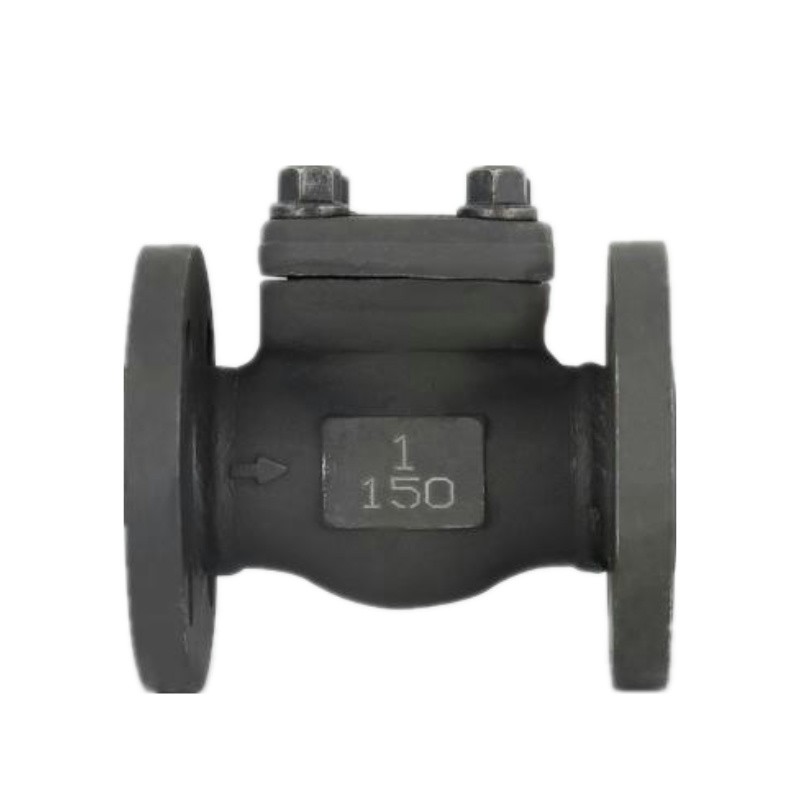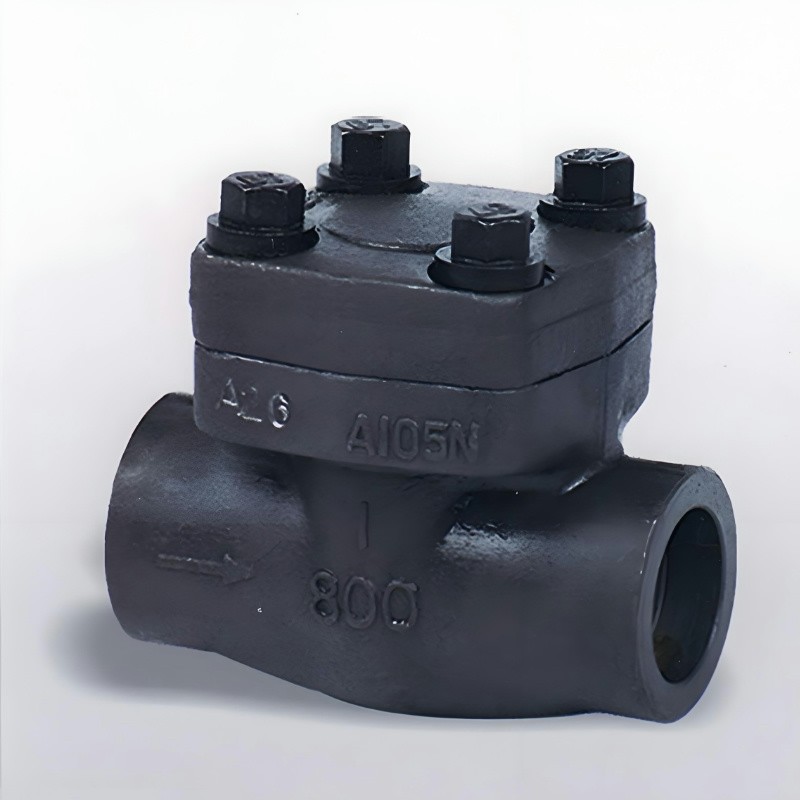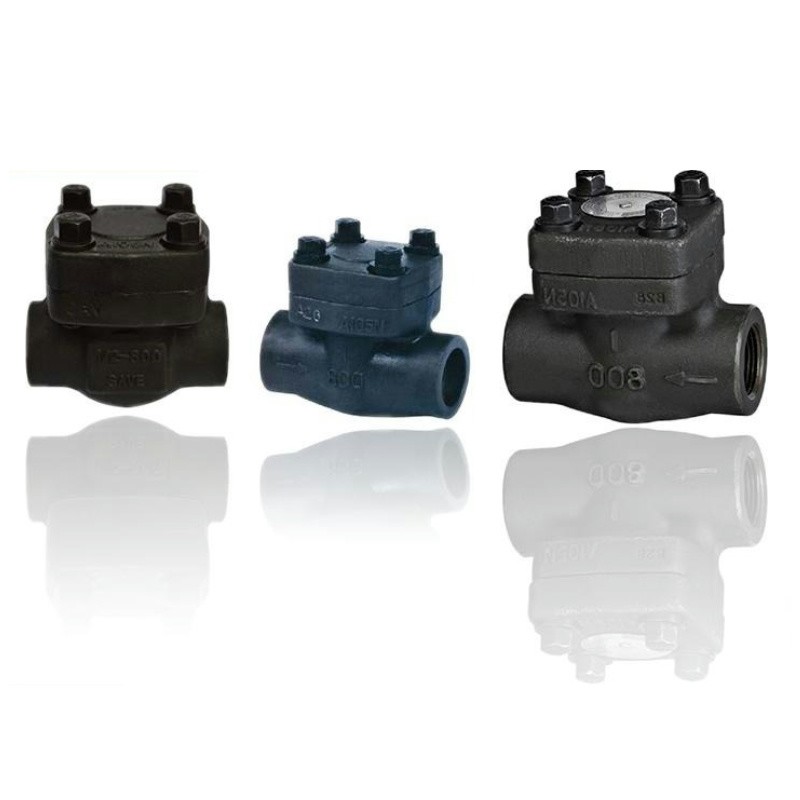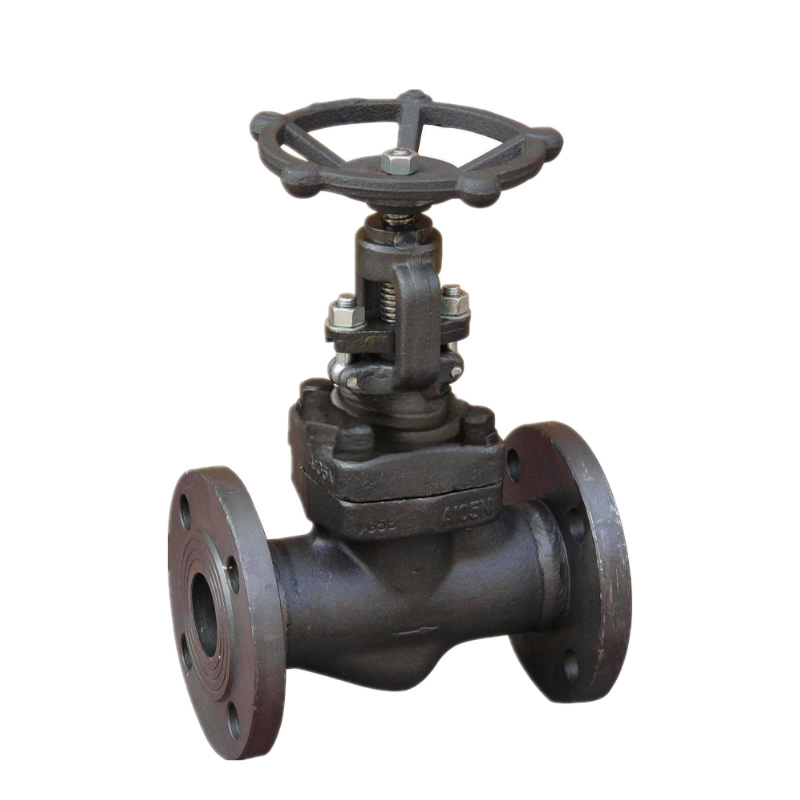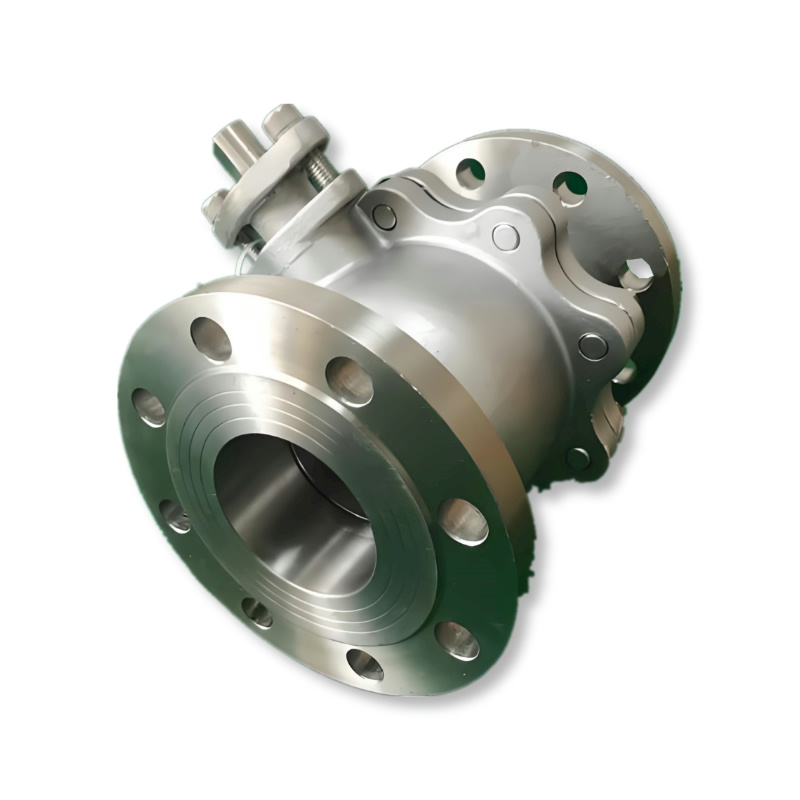Forged Steel Swing Check Valve
Introduction
This article contains all the information you need to know about Forged Steel Swing Check Valve
Read further and learn more about:
Specification
Types
Application
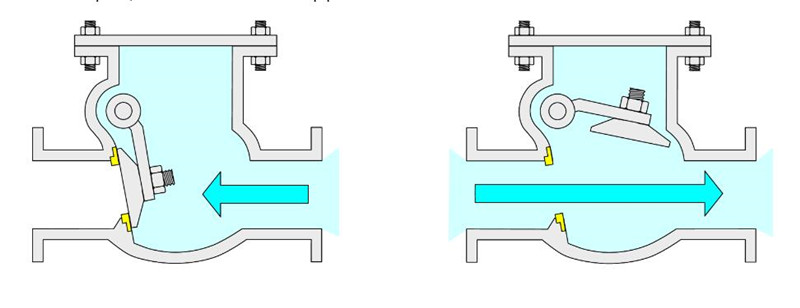
Chapter 1 - Specification
Here's a typical specification for a forged steel swing check valve:
Body Material
Forged steel, typically ASTM A105 (carbon steel), ASTM A182 F316 (stainless steel), ASTM A182 F22 (chromium molybdenum steel), or other suitable materials for high-pressure and high-temperature applications.
Trim Material:
The trim materials are typically selected based on the fluid characteristics and service conditions. Common trim materials include stainless steel (ASTM A276 Type 316, ASTM A276 Type 304), carbon steel (ASTM A105), or other suitable alloys for erosion and corrosion resistance.
Seat Material:
Seats are usually made of materials such as stainless steel, stellite, or other hardened materials for excellent wear resistance and sealing performance.
Valve Size
Available in various sizes typically ranging from 1/2" to 2" (larger sizes may be available upon request).
Bonnet Type:
Bolted bonnet design, allowing for easy maintenance and repair. Pressure seal bonnet design may also be available for high-pressure applications.
Pressure Rating
ANSI Class 800, 1500, or 2500, indicating the maximum pressure the valve can withstand. The selection of pressure rating depends on the specific application requirements.
Temperature Range
Suitable for operating temperatures ranging from -29°C to 593°C (-20°F to 1100°F) or higher, depending on material selection and pressure rating.
End Connections
Socket weld or threaded ends conforming to ASME B16.11 standards. Flanged ends may also be available upon request.
Design Standards:
The valve design should comply with international standards such as API 602, ASME B16.34, or equivalent for construction, design, and testing requirements.
Compliance:
The valve should comply with relevant industry standards and regulations such as ASME, ANSI, API, ASTM, MSS-SP, and others, depending on the application and location.
Chapter 2 - Forged Steel Swing Check Valve Types
Forged steel swing check valves typically come in similar designs to their cast steel counterparts, with variations to suit different applications and requirements. Here are some common types of forged steel swing check valves based on their design:
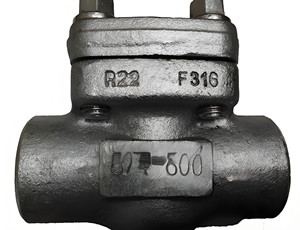
Basic Swing Check Valve:
This is the standard design of a swing check valve, featuring a hinged disc that swings open in response to forward flow and closes under reverse flow to prevent backflow. It is the simplest and most commonly used type.
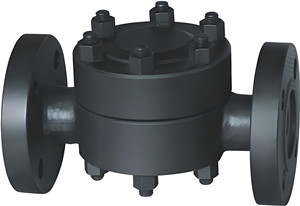
Tilting Disc Check Valve:
In this design, the disc is mounted on a hinge pin and can tilt slightly to allow for smoother operation and reduce wear on the sealing surface. Tilting disc check valves are suitable for applications with high flow rates or frequent cycling.
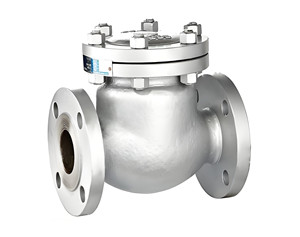
Dual Plate Check Valve:
This type of check valve features two semicircular discs that are hinged in the center and swing open or closed in response to flow direction. Dual plate check valves offer reduced pressure drop and faster response times compared to traditional swing check valves.
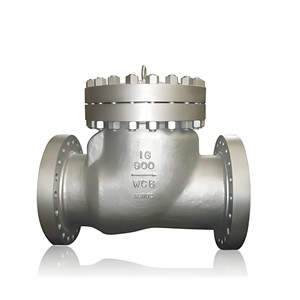
API 602 Swing Check Valve:
Forged steel swing check valves designed and manufactured according to API 602 standards, which specify requirements for small bore forged steel gate, globe, and check valves used in process piping. These valves are commonly used in oil and gas production, refining, and pipeline applications.
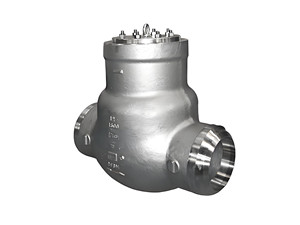
High-Pressure Swing Check Valve:
Specifically designed to withstand high-pressure applications, these valves are engineered with robust construction and materials suitable for operating pressures exceeding ANSI Class 2500.
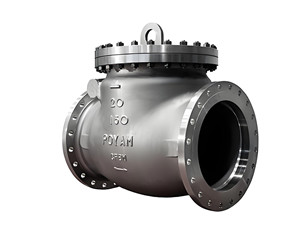
Cryogenic Swing Check Valve:
These valves are designed to handle extremely low temperatures and are used in applications such as liquefied natural gas (LNG) handling or cryogenic storage facilities. They are constructed with materials that maintain integrity and performance at cryogenic temperatures.
Chapter 3 - Forged Steel Swing Check Valve Application
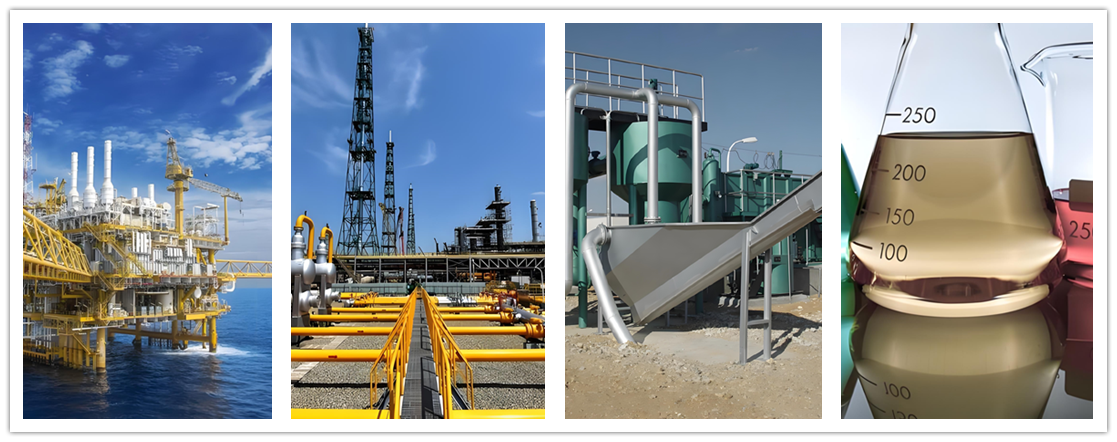
Forged steel swing check valves are utilized in various industries and applications where backflow prevention is crucial. Here are some common applications:
Oil and Gas Industry:
Swing check valves are used in various upstream, midstream, and downstream applications within the oil and gas industry. They are installed in pipelines, wellheads, manifolds, and production facilities to prevent backflow and protect equipment such as pumps, compressors, and meters.
Petrochemical Plants:
Swing check valves are employed in petrochemical plants for controlling the flow of process fluids, including chemicals, solvents, and hydrocarbons. They are used in reactors, distillation columns, fractionation units, and storage tanks to prevent reverse flow and maintain process integrity.
Water and Wastewater Treatment:
Swing check valves play a crucial role in water and wastewater treatment plants for preventing backflow and protecting equipment such as pumps, filters, and disinfection systems. They are installed in pipelines, lift stations, and treatment facilities to maintain the flow of water and sewage in the intended direction.
Power Generation:
Swing check valves are used in power plants for controlling the flow of steam, condensate, and cooling water. They are installed in boiler feedwater systems, steam turbines, condensers, and cooling towers to prevent backflow and maintain system efficiency.
Marine and Shipbuilding:
Swing check valves are employed in marine and shipbuilding applications for controlling the flow of seawater, ballast water, and fuel oil. They are installed in piping systems aboard ships, offshore platforms, and marine vessels to prevent backflow and maintain system reliability.
HVAC Systems:
Swing check valves are used in heating, ventilation, and air conditioning (HVAC) systems for controlling the flow of hot water, chilled water, and refrigerants. They are installed in piping networks, heat exchangers, and air handling units to prevent reverse flow and maintain thermal comfort.
Fire Protection Systems:
Swing check valves are incorporated into fire protection systems such as fire sprinkler systems and fire hydrants to prevent backflow of water or fire suppression agents. They ensure that water or foam is delivered to the fire source without interruption.
Municipal Water Supply and Distribution:
Swing check valves are used in municipal water supply and distribution systems for preventing backflow and protecting the public water supply from contamination. They are installed in water mains, pumping stations, and reservoirs to maintain the flow of potable water in the intended direction.
Chemical Processing:
Swing check valves find application in chemical processing plants for controlling the flow of corrosive chemicals, acids, and caustic solutions. They are used in pipelines, reactors, and storage tanks to prevent backflow and protect equipment from damage.
Food and Beverage Industry:
Swing check valves are employed in the food and beverage industry for preventing backflow and maintaining sanitary conditions in processing plants. They are installed in pipelines, mixing vessels, and filling machines to ensure the flow of food products in the intended direction.


